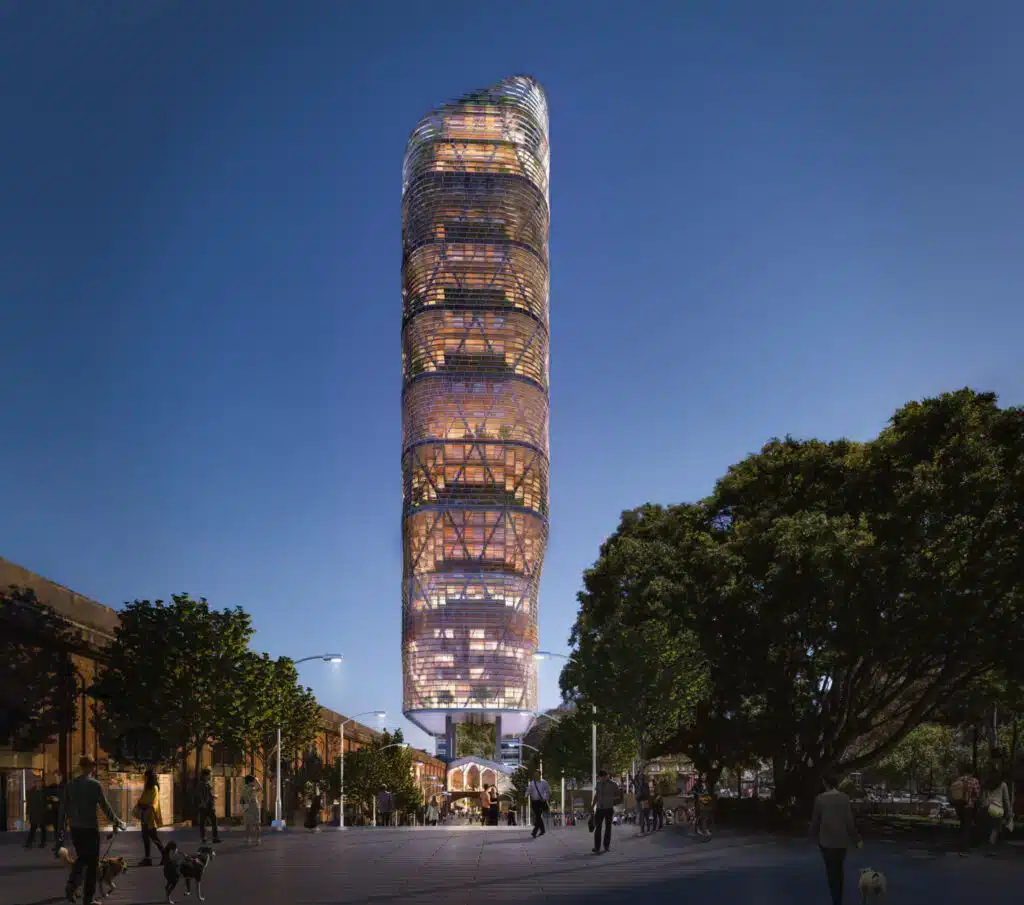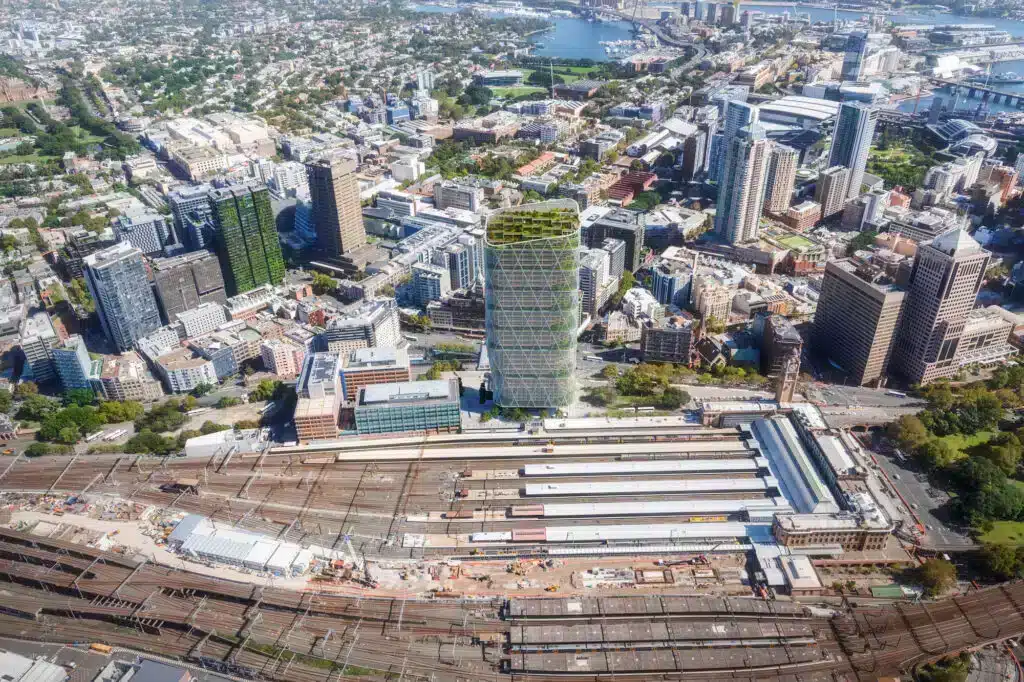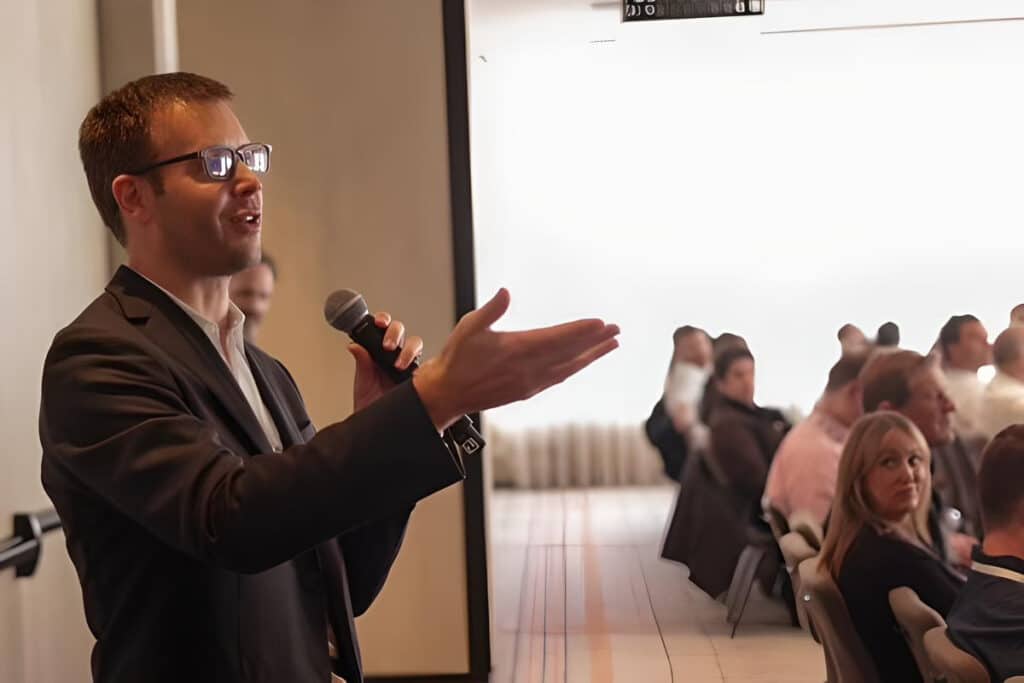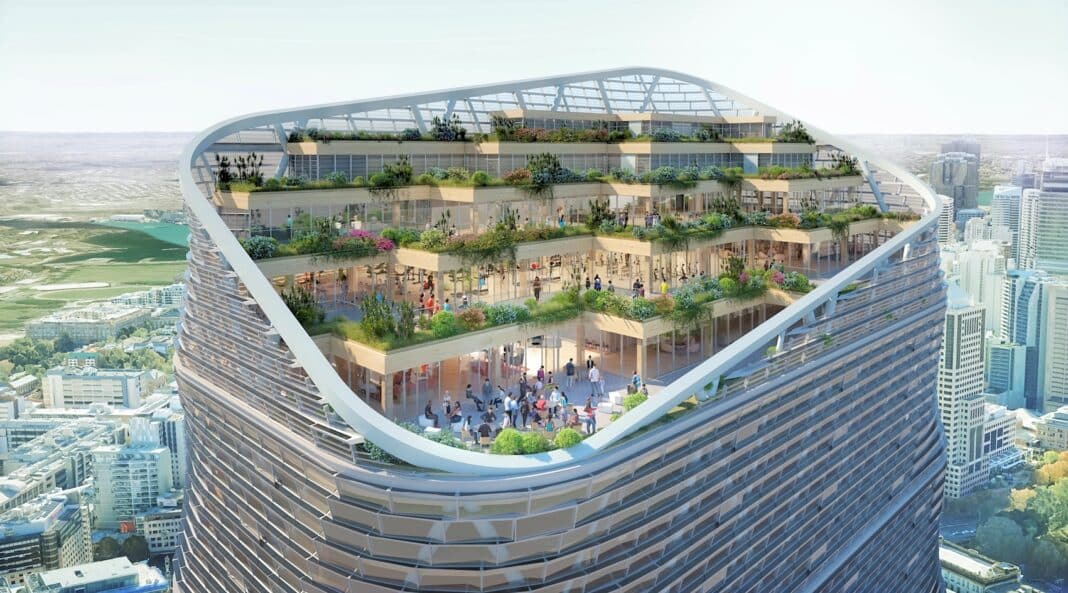The world’s largest hybrid building is “a timber building inside a much, much larger building,” that is according to Tim Allen, one of the Taylor Thomson Whitting (TTW) structural engineers working on the $1.45 billion Atlassian Central Tower – now out of the ground and rising fast in downtown Sydney.
One of the headline acts at Timber Construct, Australia’s largest timber construction conference, Mr Allen said one of the building’s key features is seven separate free-standing, three-level cross-laminated timber flooring systems sandwiched between steel-and-concrete mega floor plates, all over a seven-floor concrete podium and a structural steel exoskeleton.
“The timber floors are connected to the concrete floors via drag straps,” Mr Allen said, adding that the innovative lateral design is one of the most advanced anywhere in the world.
“Why build a 39-storey building partly out of timber?” Mr Allen told more than 220 architects, engineers, and building and timber professionals in the room, “because it comes down to using the right timber for the right application.”

Last year, Wood Central reported that construction on the 39-storey tower adjacent to Sydney’s Central train station will slash CO2 by at least 50% during construction and operate 100% on renewable power.
Employing hybrid timber technology, it combines steel frames and cross-laminated timber from the eighth story upwards, using reinforced concrete for the basement and lower floors.
And with 2,000 square metre floor plates, Mr Allen said that there was a “substantial amount of cross-laminated timber” which is a green material that helps reduce us to avoid massive amounts of concrete and steel.

Starting next year, Wood Central can reveal that European giants Stora Enso and Wieharg have been appointed to supply the cross-laminated timber and glulam beams, which together will help construct more than 21 floors of cross-laminated timber flooring and glulam beams.
The latest update comes as Joe Karten, Head of Sustainability for the project’s principle contractor (Built), said the “aspiration of (Atlassian) was to create a lighthouse to effectively change the standard that we expect for buildings.”
Atlassian Central is co-owned by Dexus and Atlassian. The builders are Built and Japanese asset manager Obayashi, which opened Port Plus in Toyko last year, the project remaining “on schedule” for a grand opening in 2026/27.
“What Atlassian has done has set the bar high at a global level. And we’re going to see a lot of action around buildings that tackle embodied carbon in a real and authentic way,” Mr Karten told Australian Financial Review’s Tech Zero podcast, confirming that the tower will accommodate at 5,000 occupants, including Atlassian, who will move in early 2027.
“They’ve [Atlassian] made no secret that they didn’t require the standard property developer margins on that project,” Mr Karten said, adding that “they invested some extra money to create a real icon of a project. Now, that’s invaluable because attracting talent—we know in tech, the war for talent is fierce.”
“Generation Y and younger are preferencing sustainability on equal, if not more preferential, terms than the economic or the financial. So, it makes sense, “Just building the cheapest building is not attractive; it’s not going to get the right.”
Speaking to Wood Central, Andrew Dunn, Timber Construct’s organiser, said that Atlassian is part of a new wave of taller hybrid buildings combining timber, steel, and concrete.
“Atlassian was a part of our discussion around the challenges faced by developers, builders, architects and engineers in using timber when constructing mid-to-high timber buildings,” Mr Dunn said, adding that the building is an example of the sum of the best building parts.
According to Mr Dunn, the total number of attendees at this year’s Timber Construct was up on past years, with a much stronger representation from architects, engineers, and building professionals. Wood Central Publisher Jason Ross was the MC for the two-day conference.
“In total, we had 41 presenters from Australia, the United States, China, Japan, Finland and Canada,” Mr Dunn said: “From getting a sneak peek at the Portland’s new timber terminal to the PNE Amphitheatre in Vancouver, we heard from the engineers, fabricators and architects behind the world’s most iconic timber projects being assembled right here and now.”

However, “one of the most important discussions was establishing a consensus on the next round of code changes for fire resistance in mass timber buildings,” Mr Dunn said.
Chairing a panel featuring Boris Iskra, FWPA Codes and Standards Manager, George Konstadakos, Development General Manager for Sumitomo Forestry in Australia – which plans to spend up to $1.2 billion on build-to-rent projects across Australia, Russell Kilmartin, director of Scientific Fire Services, and Kevin Naranjo, the Mass Timber Program lead for the US Forest Service, Mr Dunn said Australia must look at changes made to the North American and European codes ahead of the next round of code changes.
“This is a crucial step which will help drive timber use in more buildings”, Mr Dunn said, with the conference providing momentum ahead of the International Mass Timber Conference in Portland next year and, importantly, the World Conference on Timber Engineering (WCTE), which will be hosted in Brisbane on June 22-26, 2025.
“To date, we have received more than 1,000 abstracts for WCTE,” Professor Keith Crews, the WCTE organiser, revealed to Wood Central yesterday. “We expect that up to 1,200 will attend the conference, with substantial representation from Australia and across the Asia-Pacific region.”
- Wood Central will have comprehensive coverage from Timber Construct in the coming days.






